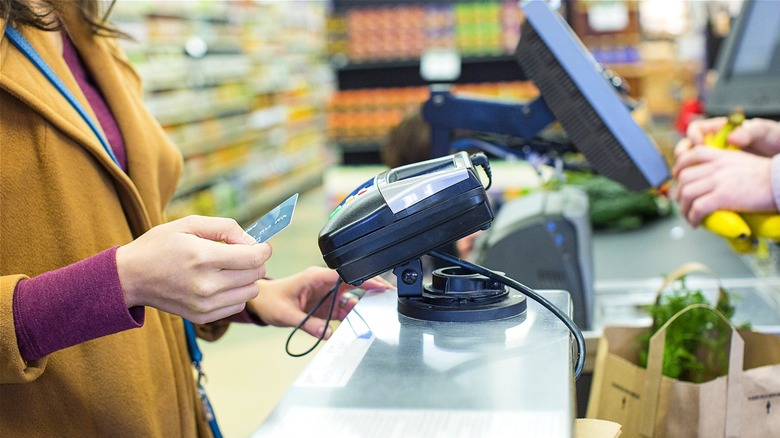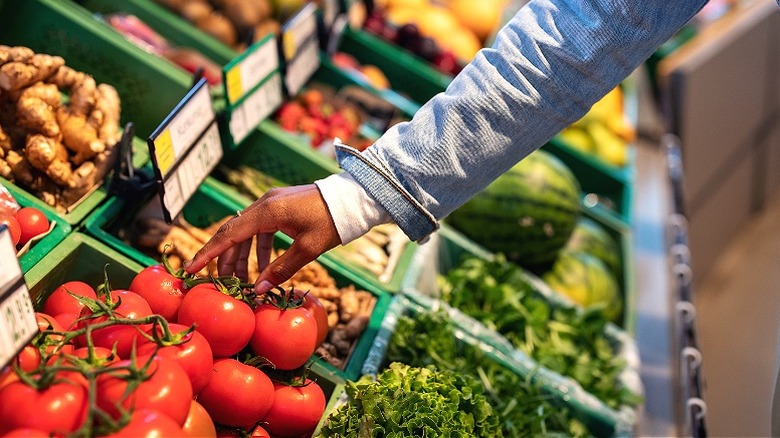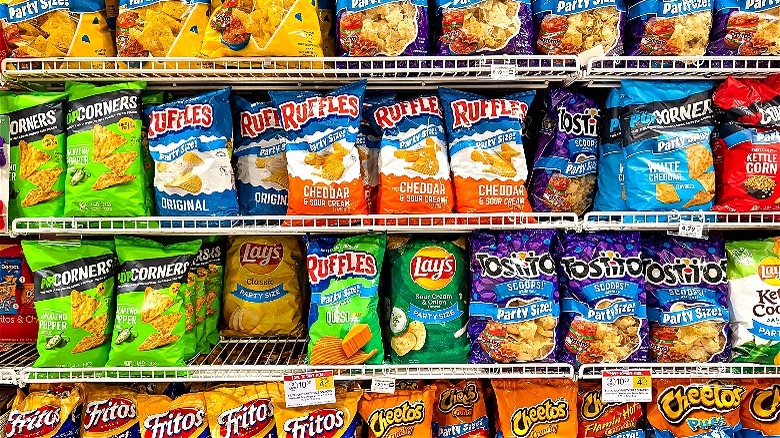The Specific Aisles Savvy Shoppers Visit First To Save Money On Groceries
According to research by the USDA, the average price for groceries rose 5% between 2022 and 2023. Per data released in 2023 by the Bureau of Labor Statistics for consumer spending in 2022, meanwhile, the average household spends a monthly average of $475.25, or $5,703 annually, on groceries, with this number subject to change based on how many people are in the household.
Social media is filled with posts by individuals lamenting about sky-high grocery prices today. On TikTok, for example, @alexandriajunis asked her followers, "Can someone please explain to me, at what point did cereal become $10? Like, Cap'n Crunch, Cinnamon Toast Crunch, $10. And the off brand, $7.89. What kind of world are we living in that struggle meals are luxury now?" She ended the video with the request, "Make it make sense."
While inflation in the United States continues to cool in 2024 (2.5% for August, following July's 2.9%, as reported by The Associated Press), it can still feel like you're spending a mini fortune each time you visit the grocery store. This said, there are myriad grocery shopping strategies that can save you money, including this simple game plan that focuses on where to shop first: the store's outer aisles.
Shop the grocery store's outer aisles first
Grocery stores have sneaky ways of tricking customers into spending more money each time they visit. One of the main ones is strategically positioning essential items, such as milk and eggs, so that you have to walk past displays of overpriced — and unnecessary — snacks and other boxed goods. If you want to stick to a budget, the trick (in addition to listening to this type of music while grocery shopping) is to head straight to the perimeter of the store, where vegetables, fruits, meat, and dairy are typically housed.
Nik Fields, aka the "Chic Chef," told GOBankingRates that "the freshest food at the lowest cost is found in the outer aisles. When you go down the inner aisles, you have the processed foods, which will cost you more money." Additionally, it's helpful to learn what produce is in season. According to the American Heart Association, fresh grocery store items tend to be cheaper during their harvest season. For example, in the fall, you may find deals on apples, pears, pumpkins, squash, and sweet potatoes.
It's where you'll find the healthiest options
Not only are the products found on the outskirts of the grocery store more budget-friendly, they're also more beneficial to our health. The American Heart Association advises staying vigilant when entering inner-aisle territory, only picking up canned products, like beans, and whole grains, such as rice and pasta, and completely avoiding the aisles filled with cookies, chips, soda, and other sugary snacks. Laying eyes on such food items can cause an unexpected splurge (especially when you're shopping on an empty stomach), resulting in a higher grocery bill and risk for poor health.
Katie Johnson, a health educator with the Mayo Clinic Health System, explained that the layout of grocery stores tends to draw customers toward more unhealthy choices. To counter this, she also says to shop the outer aisles. "For people concerned about chemicals and preservatives in their diet," she said, "the perimeter is often a great place to shop," as "... many produce, meat, and dairy items have fewer preservatives than foods on the shelf." This said, Johnson cautioned shoppers not to think these items are always free of chemicals and/or antibiotics, and to also avoid the ready-to-go food offered in the deli section, even though it's located on the perimeter, too.


